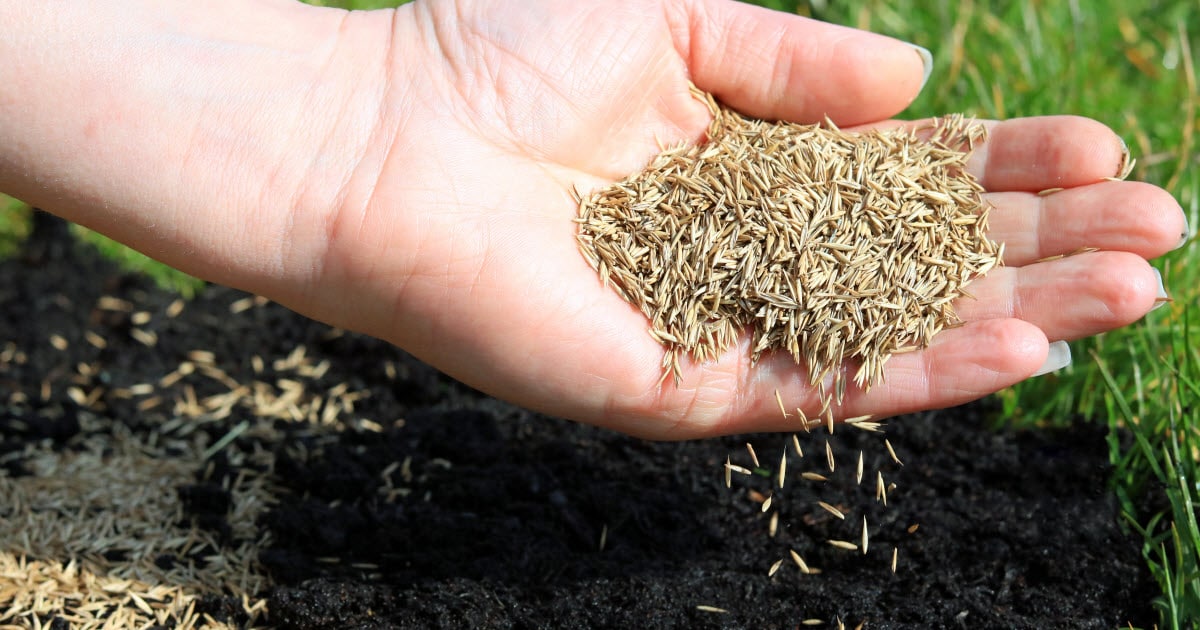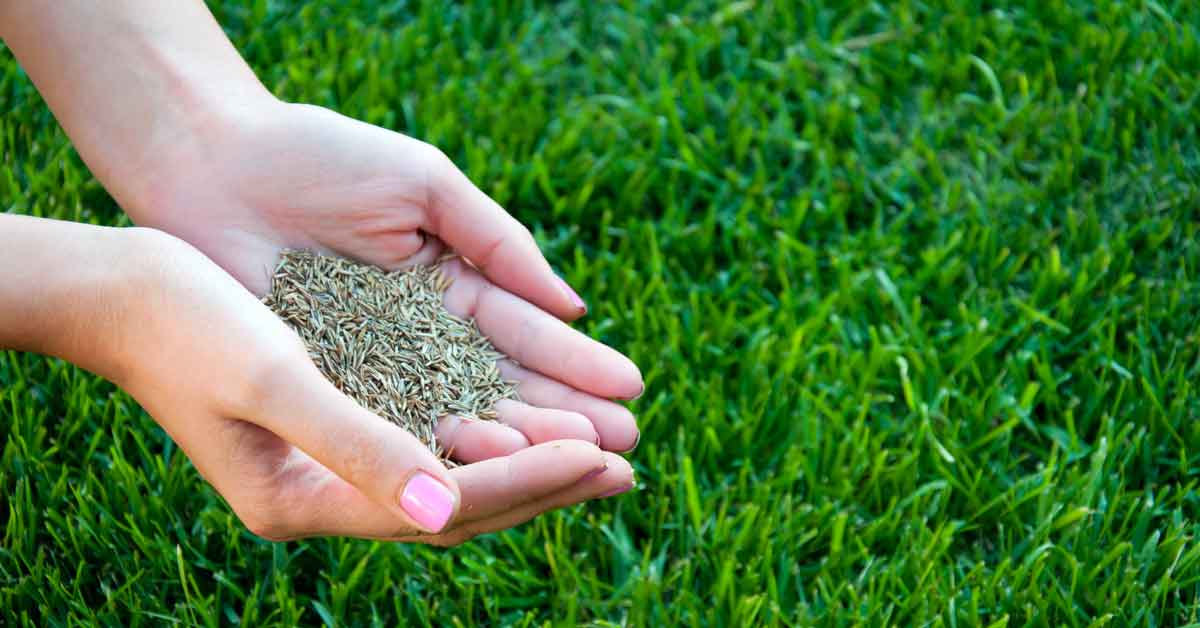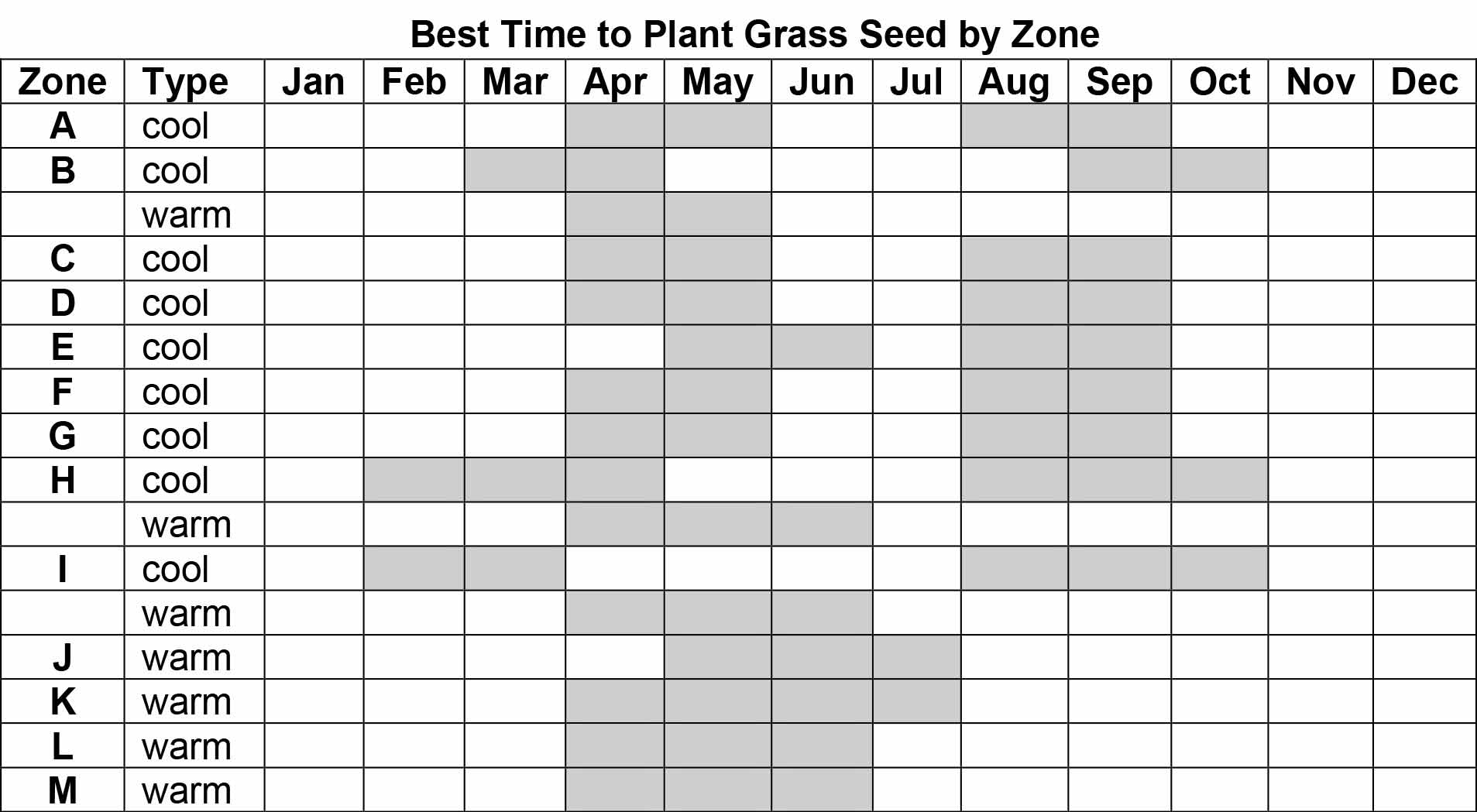When Is the Best Time to Plant Grass Seed in Cold Climates? This question is a common one for homeowners in colder regions, as the success of your lawn hinges on getting the timing right. The challenges of cold climates, including shorter growing seasons and unpredictable weather, can make it seem like a daunting task.
However, with careful planning and an understanding of the factors that influence grass seed germination, you can achieve a lush and healthy lawn even in the face of winter’s chill.
This guide will provide you with the knowledge you need to select the optimal planting time for your region, prepare your soil for success, choose the right grass seed varieties, and implement proper planting and post-planting care techniques. By following these steps, you’ll be well on your way to a vibrant green lawn that thrives throughout the year.
Understanding Cold Climates
Planting grass seed in cold climates presents unique challenges due to shorter growing seasons, unpredictable weather patterns, and the potential for frost damage. Knowing the best time to plant is crucial for success, as timing directly influences germination rates, establishment, and overall lawn health.
The Growing Season in Cold Climates
The growing season in cold climates is significantly shorter compared to warmer regions. Typically, it begins in late spring or early summer and ends in late summer or early fall. The exact duration varies depending on the specific location and its latitude.
The growing season is defined by the period when temperatures are consistently above freezing, allowing grass seeds to germinate and establish a healthy root system.
Factors Influencing the Best Planting Time
Several factors influence the optimal time to plant grass seed in cold climates.
Frost Dates
Frost dates are crucial for determining the safe planting window. The last frost date in spring marks the end of the risk of frost, while the first frost date in fall marks the beginning. Planting before the last frost date can result in damage to newly sprouted seedlings, while planting after the first frost date might not allow sufficient time for establishment before winter.
Soil Temperature
Soil temperature plays a critical role in grass seed germination. For optimal germination, soil temperatures should be consistently above 50°F (10°C). Soil temperature can be monitored using a soil thermometer or by consulting local weather reports.
Sunlight Hours
Grass seed needs adequate sunlight for germination and growth. The number of sunlight hours increases as the season progresses, reaching its peak during the summer months. Planting during the period with longer daylight hours provides ample sunlight for healthy grass growth.
Ideal Planting Time
The optimal time for planting grass seed in cold climates is during the spring and fall seasons. These periods offer favorable conditions for germination and establishment. However, the specific timing within these seasons varies depending on the region and its unique climatic characteristics.
Planting in Early Spring
Planting grass seed in early spring, after the last frost, allows for optimal germination and establishment. The soil is typically cool and moist, providing an ideal environment for the seeds to sprout and develop. Additionally, the lengthening days and increasing temperatures create a favorable environment for photosynthesis, allowing the new grass to grow vigorously.
Planting in Late Summer/Early Fall
Planting in late summer or early fall, before the first frost, also offers favorable conditions for grass seed germination. The soil is still warm enough for germination, and the cooler temperatures help to retain moisture. The cooler temperatures also reduce the risk of the grass drying out, allowing for a successful establishment.
Timing for Different Cold Climate Regions
- Northern Regions:In northern regions, where the growing season is shorter, planting in early spring, typically from late April to mid-May, is often preferred. This allows the grass to establish before the summer heat arrives. For fall planting, the optimal window is typically from late August to mid-September, ensuring the grass has enough time to root before winter arrives.
- Southern Regions:In southern regions, with longer growing seasons, planting can be extended into the early fall, typically from late September to mid-October. This allows for a longer period of establishment before winter arrives.
Preparing the Soil
A well-prepared soil is crucial for successful grass seed germination and establishment, especially in cold climates. This involves several steps, starting with soil testing to understand the existing conditions and then amending the soil to create an environment that supports healthy grass growth.
Soil Testing
Soil testing is essential to determine the pH, nutrient levels, and composition of your soil. This information is crucial for understanding the specific needs of your lawn and determining the appropriate amendments. Soil testing kits are available at most garden centers or online, and you can also send samples to a certified laboratory for analysis.
Soil Amendments
Once you have the results of your soil test, you can start amending the soil to improve its structure and nutrient content. This involves adding organic matter, such as compost or manure, and adjusting the pH if necessary.
Best Soil Amendments for Cold Climate Soils
Soil Type |
Best Amendments |
|---|---|
Clay Soil |
Compost, Peat Moss, Vermicast, Gypsum |
Sandy Soil |
Compost, Manure, Peat Moss, Humus |
Loamy Soil |
Compost, Manure, Peat Moss |
Preparing the Soil for Planting
Once you have amended the soil, it’s time to prepare it for planting. This involves removing any existing vegetation, breaking up compacted soil, and leveling the surface.
- Remove Existing Vegetation:This can be done by hand-pulling weeds or using a herbicide.
- Break Up Compacted Soil:This can be done with a garden fork or a tiller.
- Level the Surface:This can be done with a rake or a lawn roller.
Watering the Soil
Watering the soil thoroughly before planting grass seed is essential for seed germination and establishment. This ensures the soil is moist and provides the seeds with the necessary moisture to sprout.
Choosing the Right Grass Seed
Selecting the right grass seed is crucial for establishing a healthy and vibrant lawn in a cold climate. The type of grass you choose will determine its resilience, appearance, and overall success in your specific environment.
Understanding Different Grass Seed Varieties, When Is the Best Time to Plant Grass Seed in Cold Climates?
Choosing the right grass seed for your cold climate is essential for a healthy lawn. Several grass varieties are well-suited for these conditions, each with its own strengths and weaknesses. The following table compares some popular options:
Variety |
Strengths |
Weaknesses |
|---|---|---|
Kentucky Bluegrass |
|
|
Fine Fescue |
|
|
Perennial Ryegrass |
|
|
Importance of a Grass Seed Mix
Using a mix of cool-season grasses is often recommended for optimal results in cold climates. This approach combines the strengths of different varieties, creating a lawn that is more resilient, adaptable, and aesthetically pleasing. For example, a mix of Kentucky bluegrass, fine fescue, and perennial ryegrass can provide a dense, lush lawn with good wear tolerance, shade tolerance, and drought resistance.
When planting grass seed in cold climates, timing is critical for successful germination and establishment. The ideal window typically falls in early spring or late summer, allowing for consistent soil temperatures and adequate moisture. To learn more about the intricacies of selecting the perfect planting window for a lush lawn, consider consulting a comprehensive guide like How to Plan the Perfect Time to Plant Grass Seed for a Full Lawn.
By carefully considering these factors, you can maximize your chances of achieving a thriving lawn, even in colder climates.
The ryegrass establishes quickly, providing an initial green cover, while the bluegrass and fescue contribute to long-term durability and aesthetic appeal.
Factors to Consider When Selecting Grass Seed
Several factors should be considered when choosing grass seed for your cold climate lawn. These include:
- Desired Texture:Consider the desired look and feel of your lawn. Fine fescue offers a soft, delicate texture, while Kentucky bluegrass provides a more robust and dense appearance.
- Shade Tolerance:If your lawn receives significant shade, choose varieties like fine fescue or shade-tolerant blends. These grasses can thrive in low-light conditions.
- Drought Resistance:In areas with limited rainfall, consider drought-tolerant varieties like fine fescue or blends containing drought-resistant grasses.
- Foot Traffic:If your lawn experiences high foot traffic, choose varieties with good wear tolerance, such as Kentucky bluegrass or perennial ryegrass.
- Disease Resistance:Select varieties known for their disease resistance to minimize the risk of lawn diseases, especially in humid climates.
Planting Techniques: When Is The Best Time To Plant Grass Seed In Cold Climates?

Planting grass seed in cold climates requires specific techniques to ensure successful germination and establishment. Understanding the proper seed depth, spacing, and watering methods is crucial for achieving a healthy lawn.
Seed Depth
The depth at which you plant your grass seed is essential for proper germination. In cold climates, planting too deep can hinder the seed’s ability to reach the surface and sprout.
- Recommended Depth:The general rule of thumb is to plant grass seed at a depth of 1/4 to 1/2 inch.
- Using a Rake:After spreading the seed, use a rake to lightly work the seed into the soil. This will ensure the seed is at the proper depth and in contact with the soil.
Seed Spacing
Proper seed spacing is crucial for healthy grass growth. If the seeds are too close together, they will compete for resources, leading to thin and weak growth.
- Recommended Spacing:Aim for a spacing of 2 to 3 seeds per square inch.
- Using a Spreader:A spreader is a valuable tool for achieving even seed distribution.
Watering
Consistent and adequate watering is essential for grass seed germination and establishment.
- Frequency:Water the seedbed daily, or as needed to keep the soil moist but not soggy.
- Depth:Water deeply enough to reach the seed, but avoid excessive watering that can lead to compaction.
Using a Spreader
A spreader is a valuable tool for achieving even seed distribution, which is essential for a uniform lawn.
- Types of Spreaders:There are two main types of spreaders: drop spreaders and rotary spreaders. Drop spreaders are typically used for smaller areas, while rotary spreaders are better suited for larger lawns.
- Calibration:Before using a spreader, it is essential to calibrate it to ensure that the correct amount of seed is being applied. This will help prevent over-seeding or under-seeding.
- Overlapping Passes:Overlap each pass of the spreader by about 50% to ensure that the entire area is adequately covered.
Post-Planting Care
After planting your grass seed, proper care is crucial for successful establishment and a healthy lawn in cold climates. These steps ensure your new lawn thrives and survives the winter months.
Watering
Watering is essential for seed germination and root development. The frequency and amount of water needed vary depending on the soil type, weather conditions, and the grass variety.
- During the establishment phase, aim for consistent moisture, but avoid overwatering, which can lead to fungal diseases.
- Watering deeply and less frequentlyencourages deeper root growth, which is crucial for drought tolerance and winter survival.
- Use a sprinkler or watering canto evenly distribute water across the lawn.
Fertilizing
Fertilizing provides the necessary nutrients for healthy growth. However, excessive fertilization can harm the new lawn, especially during the establishment phase.
- Use a starter fertilizerspecifically formulated for new lawns. This fertilizer contains a higher percentage of phosphorus, which promotes root development.
- Apply fertilizer sparinglyduring the establishment phase. Too much nitrogen can encourage excessive top growth, making the lawn more susceptible to winter damage.
- Avoid fertilizing in late fall, as it can stimulate new growth, which may not have time to harden off before winter.
Mowing
Mowing is important for maintaining the shape and health of the lawn, but it’s crucial to avoid mowing too short during the establishment phase.
- Wait until the grass reaches a height of 3-4 inchesbefore mowing for the first time.
- Mow at a higher setting, removing no more than one-third of the grass blade at each mowing. This helps prevent stress and encourages deeper root growth.
- Sharpen the mower blades regularlyto ensure a clean cut, reducing the risk of disease.
Pest and Disease Control
Pests and diseases can damage a newly established lawn. Taking preventive measures can help protect your lawn.
While the ideal time to plant grass seed in cold climates is often in the early spring, a fall planting can also be successful. If you’re aiming for a lush lawn next year, consider starting your fall garden prep now.
Check out How To Start A Productive Fall Garden for tips on preparing your soil and choosing the right fall vegetables. Then, when the weather cools down and the ground is still workable, you can get started on your fall grass seed planting for a healthy lawn come spring.
- Identify and treat any pest or disease problemspromptly. Early detection is crucial for effective control.
- Use organic pest control methodswhenever possible. This helps minimize the risk of harming beneficial insects and wildlife.
- Practice good lawn care practices, such as proper watering and mowing, to create a healthy environment that discourages pests and diseases.
Post-Planting Care Schedule
The following table Artikels a general schedule for watering, fertilizing, and mowing during the establishment phase of a new lawn in a cold climate.
Week |
Watering |
Fertilizing |
Mowing |
|---|---|---|---|
1-2 |
Water deeply 2-3 times per week |
Apply starter fertilizer |
Do not mow |
3-4 |
Water deeply 1-2 times per week |
Do not fertilize |
Mow at a height of 3-4 inches |
5-6 |
Water deeply 1-2 times per week |
Do not fertilize |
Mow at a height of 3-4 inches |
7-8 |
Water deeply 1-2 times per week |
Do not fertilize |
Mow at a height of 3-4 inches |
Troubleshooting Common Problems
Planting grass seed in cold climates can present unique challenges, but with proper preparation and vigilance, you can overcome them. Here, we will discuss some common problems and offer solutions to ensure your lawn thrives.
Poor Germination
Poor germination is a common issue when planting grass seed in cold climates. The low temperatures and shorter days can hinder seed sprouting.
- Use high-quality seed:Choose seed specifically formulated for cold climates and ensure it has a high germination rate.
- Maintain proper soil temperature:Aim for a soil temperature of at least 50°F (10°C) for optimal germination. Consider using a soil thermometer to monitor the temperature.
- Provide adequate moisture:Water the seedbed regularly, ensuring the soil stays consistently moist but not soggy.
- Protect the seed from birds and animals:Use netting or other deterrents to prevent birds and animals from consuming or damaging the seed.
Weed Infestation
Weeds can quickly take over a newly seeded lawn, competing with grass seedlings for resources.
- Pre-emergent herbicides:Apply a pre-emergent herbicide before planting to prevent weed seeds from germinating.
- Hand-pulling:Regularly remove weeds by hand, especially during the early stages of lawn establishment.
- Post-emergent herbicides:Use a post-emergent herbicide to control weeds that have already emerged, but be cautious to avoid harming the newly established grass.
Disease
Diseases can weaken and damage your lawn, particularly in cold, humid climates.
- Choose disease-resistant grass varieties:Opt for grass varieties known for their resistance to common lawn diseases.
- Maintain good air circulation:Avoid over-watering and ensure adequate air circulation to prevent fungal growth.
- Use a fungicide:If a disease outbreak occurs, apply a fungicide specifically formulated for the identified disease.
Winter Damage
Winter damage can occur due to harsh weather conditions like freezing temperatures, snow accumulation, and ice buildup.
- Protect your lawn:Apply a layer of winterizer fertilizer to provide nutrients and improve winter hardiness.
- Reduce foot traffic:Minimize foot traffic on your lawn during the winter to prevent damage.
- Remove snow and ice:Regularly remove snow and ice from your lawn to prevent compaction and damage to the grass blades.
Conclusion

Planting grass seed in cold climates requires careful planning and execution, but the rewards are well worth the effort. By understanding the ideal planting window for your region, preparing your soil properly, selecting the right grass seed varieties, and implementing proper planting and post-planting care techniques, you can achieve a lush and healthy lawn that thrives throughout the year.
Remember, patience and consistency are key to success, so don’t be discouraged if you encounter some challenges along the way. With a little time and effort, you can enjoy a beautiful green lawn that enhances the beauty of your home and provides a welcome respite from the cold.
FAQ Overview
What are some signs that my grass seed is not germinating properly?
If you notice that your grass seed isn’t germinating properly, there are a few signs to look for. These include: lack of green shoots emerging, patches of bare soil, and a thin, sparse lawn.
What are some common pests that can damage a newly planted lawn?
Some common pests that can damage a newly planted lawn include grubs, cutworms, and chinch bugs. These pests can feed on the roots of your grass, causing damage and potentially killing the plants.
How do I know if my soil is properly amended?
You can determine if your soil is properly amended by performing a soil test. This will provide you with information about the pH, nutrient levels, and other important factors that affect plant growth.
